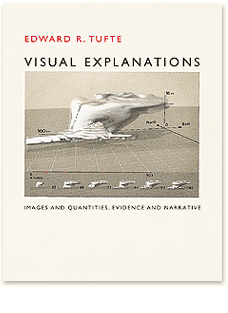John Maeda: The Laws of Simplicity (2006)
Filed under book | Tags: · design, graphic design, technology

Finally, we are learning that simplicity equals sanity. We’re rebelling against technology that’s too complicated, DVD players with too many menus, and software accompanied by 75-megabyte “read me” manuals. The iPod’s clean gadgetry has made simplicity hip. But sometimes we find ourselves caught up in the simplicity paradox: we want something that’s simple and easy to use, but also does all the complex things we might ever want it to do. In The Laws of Simplicity, John Maeda offers ten laws for balancing simplicity and complexity in business, technology, and design—guidelines for needing less and actually getting more.
Maeda—a professor in MIT’s Media Lab and a world-renowned graphic designer—explores the question of how we can redefine the notion of “improved” so that it doesn’t always mean something more, something added on.
Maeda’s first law of simplicity is “Reduce.” It’s not necessarily beneficial to add technology features just because we can. And the features that we do have must be organized (Law 2) in a sensible hierarchy so users aren’t distracted by features and functions they don’t need. But simplicity is not less just for the sake of less. Skip ahead to Law 9: “Failure: Accept the fact that some things can never be made simple.” Maeda’s concise guide to simplicity in the digital age shows us how this idea can be a cornerstone of organizations and their products—how it can drive both business and technology. We can learn to simplify without sacrificing comfort and meaning, and we can achieve the balance described in Law 10. This law, which Maeda calls “The One,” tells us: “Simplicity is about subtracting the obvious, and adding the meaningful.”
Publisher MIT Press, 2006
Simplicity: Design, Technology, Business, Life series
ISBN 0262134721, 9780262134729
100 pages
PDF (updated on 2014-8-29)
Comment (0)Edward R. Tufte: Visual Explanations: Images and Quantities, Evidence and Narrative (1997/2005)
Filed under book | Tags: · design, information design, interaction design, visual culture

Visual Explanations: Images and Quantities, Evidence and Narrative is about pictures of verbs, the representation of mechanism and motion, process and dynamics, causes and effects, explanation and narrative. Practical applications and examples include statistical graphics, charts for making important decisions in engineering and medicine, technical manuals, diagrams, design of computer interfaces and websites and on-line manuals, animations and scientific visualizations, techniques for talks, and design strategies for enhancing the rate of information transfer in print, presentations, and computer screens. The use of visual evidence in deciding to launch the space shuttle Challenger is discussed in careful detail. Video snapshots show redesigns of a supercomputer animation of a thunderstorm. The book is designed and printed to the highest standards, with luscious color throughout and four built-in flaps for showing motion and before/after effects.
Publisher Graphics Press, 1997
Seventh printing, with revisions, June 2005
Length 156 pages
PDF (no OCR)
Comment (0)Edward R. Tufte: The Cognitive Style of PowerPoint (2003)
Filed under pamphlet | Tags: · computer graphics, design, visual communication

In corporate and government bureaucracies, the standard method for making a presentation is to talk about a list of points organized onto slides projected up on the wall. For many years, overhead projectors lit up transparencies, and slide projectors showed high-resolution 35mm slides. Now “slideware” computer programs for presentations are nearly everywhere. Early in the 21st century, several hundred million copies of Microsoft PowerPoint were turning out trillions of slides each year.
Alas, slideware often reduces the analytical quality of presentations. In particular, the popular PowerPoint templates (ready-made designs) usually weaken verbal and spatial reasoning, and almost always corrupt statistical analysis. What is the problem with PowerPoint? And how can we improve our presentations?
Publisher Graphics Press, 2003
ISBN 0-9613921-5-0
Length 32 pages

